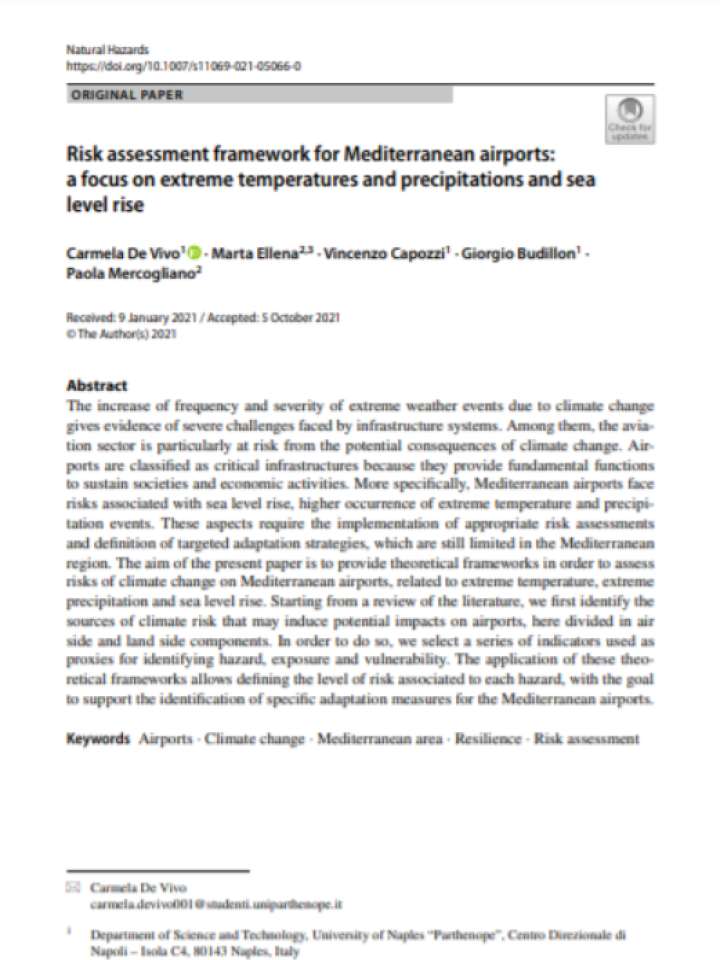Risk assessment framework for Mediterranean airports: a focus on extreme temperatures and precipitations and sea level rise
The paper aims to provide theoretical frameworks in order to assess risks of climate change on Mediterranean airports, related to extreme temperature, extreme precipitation and sea level rise. The increase of frequency and severity of extreme weather events due to climate change gives evidence of severe challenges faced by infrastructure systems. Mediterranean airports face risks associated with sea level rise, higher occurrence of extreme temperature and precipitation events. These aspects require the implementation of appropriate risk assessments and definition of targeted adaptation strategies, which are still limited in the Mediterranean region. Starting from a review of the literature, the study first identifies the sources of climate risk that may induce potential impacts on airports, here divided in air side and land side components. In order to do so, the researchers select a series of indicators used as proxies for identifying hazard, exposure and vulnerability. The application of these theoretical frameworks allows defining the level of risk associated to each hazard, with the goal to support the identification of specific adaptation measures for the Mediterranean airports.
The findings reveal that airports located in the Mediterranean regions, in fact, will mainly have to face the risks associated with these climatic hazards. However, it is possible to replicate the application of the frameworks in other geographical contexts affected by the same risks. The impacts of climate change on the aviation sector are well known, but in Europe and especially in the Mediterranean basin, there is no clear methodology to assess climate risks for airports. The method proposed here therefore aims to support stakeholders in conducting risk analyses in order to identify suitable adaptation strategies. Based on the state-of-the-art literature, the theoretical frameworks were constructed through the identification of specific indicators of hazard, exposure and vulnerability. The illustrated methodology represents one of the first attempts to quantify risks in the airport environment and proposes an approach with the goal to define a specific risk for each hazard considered. Further research and applications in this area therefore need to be promoted, providing additional elements and cases studies.
Explore further
